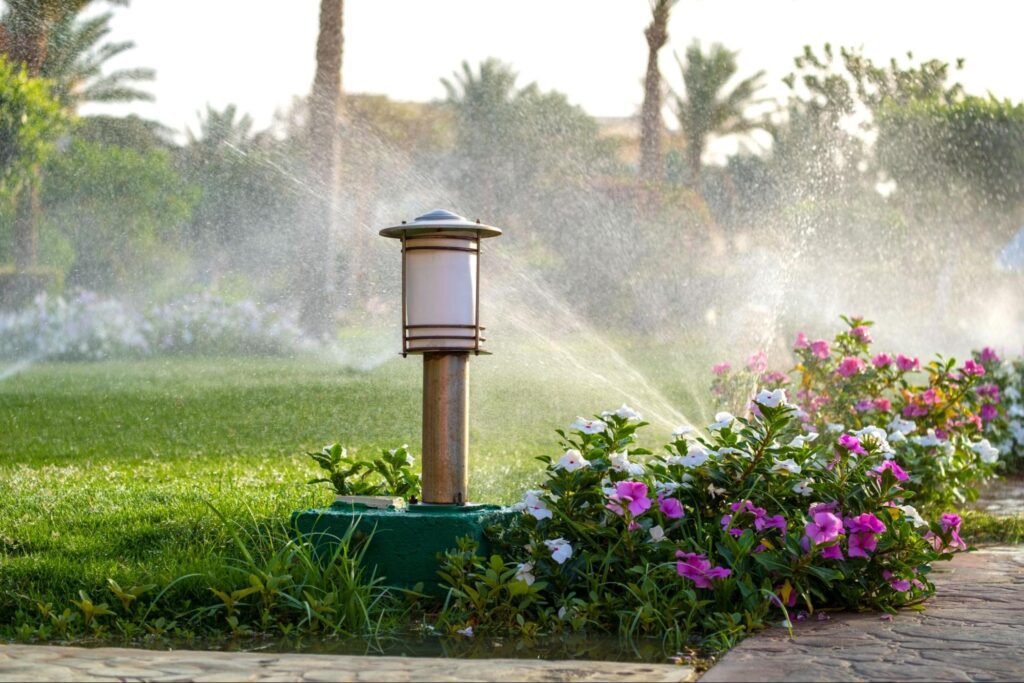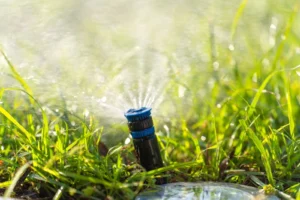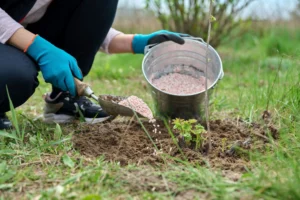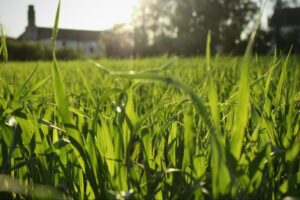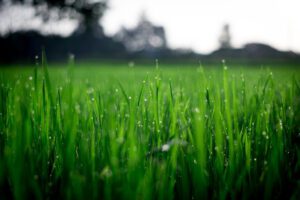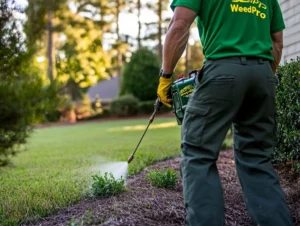Building a successful, water-wise lawn in Atlanta relies on understanding the right irrigation methods for our humid subtropical climate and clay soils. This information will explain seasonal watering standards, how the type of soil affects water from irrigation or rainfall, different irrigation systems for various space uses, the benefits of smart controllers, environmentally friendly conservation methods, and when to reach out to WeedPro’s irrigation experts.
By applying these locally based irrigation strategies you will promote a deeper root system, increase water conservation, and have a great lawn throughout the year.
How Does Atlanta’s Climate and Soil Affect Lawn Irrigation Needs?
The humid subtropical climate in Atlanta, characterized by hot, humid weather in the summer and seasonal rainfall, combined with slightly clay-like soil, can limit drainage and root growth. If you understand the climate characteristics and soil properties of your lawn’s location, you can adjust your irrigation to encourage deep root systems and prevent runoff, thereby ensuring the lawn receives adequate watering.
- Evapotranspiration peaks in July and August, which means that is the time of year to increase irrigation to bring your moisture to 1 inch per week.
- Meanwhile, throughout the rest of the year (spring) moderate rains should allow you to cut irrigation schedules back, and will ultimately still promote conservation.
- Winter dormancy will require minimal irrigation to avoid issues with disease on common turfgrass.
You can maximize your lawn’s health by varying the irrigation throughout the year to conserve water and ultimately determine the best irrigation system for your needs.
What Are Georgia’s Seasonal Watering Requirements for Lawns?
The frequency of watering adjustments throughout the spring (March through May) will take the temperature and rainfall into consideration:
- -Spring (March – May): Ranges from .5 inches to 1 inch weekly (for up to the entire month), split between two intervals for another week temporarily, while the lawn greens up.Summer (June–August): Water with 1 inch per week through 3-4 deep watering cycles to help build drought tolerance.
- Fall (September–November): Reduce to 0.5 inch per week as temperatures decrease and natural rainfall increases.
- Winter (December–February): Water only during extended dry days to avoid stress on the turf.
Following these seasonal watering requirements helps reduce water waste and comply with local watering regulations, while also preparing us for adjustments to soil-based watering.
Which Soil Types Are Common in Atlanta and How Do They Impact Water Retention?
Atlanta lawns typically feature clay, sandy loam, or loamy soils, each requiring a distinct approach to irrigation:
| Soil Type | Water Retention | Root-Zone Impact |
| Heavy Clay | Holds water well, drains slowly | Can lead to pooling; needs shorter watering cycles |
| Sandy Loam | Drains quickly, retains little moisture | Requires frequent, light watering to prevent drought stress |
| Loamy Soil | Maintains a good balance of moisture | Ideal for deep, less frequent watering |
Clay soil retains moisture but compacts easily, while sandy loam dries out fast. Tailoring the watering cycle duration and frequency to these characteristics improves water infiltration and turf health, which in turn leads to considerations for water restrictions.
What Local Water Restrictions and Drought Conditions Should Homeowners Know?
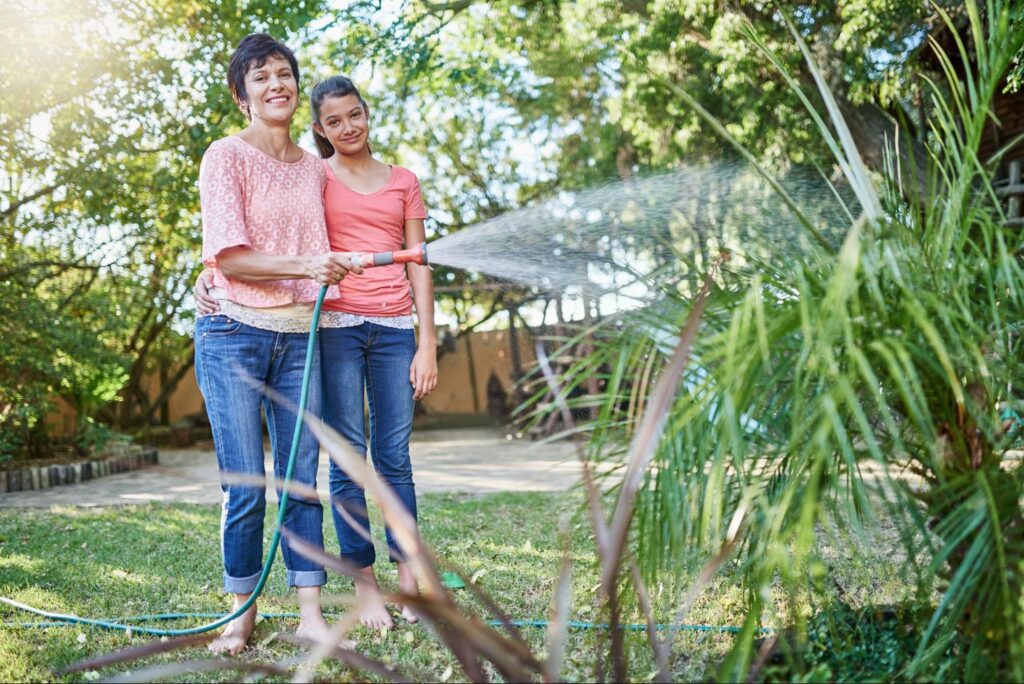
Water utilities in the Atlanta region have implemented seasonal odd/even watering rules, drought stages, and runoff limits to conserve water. Here are some of the main local regulations:
- Residential irrigation is limited to twice a week, based on your street address.
- When a drought emergency is declared, outdoor irrigation is prohibited only under unacceptable watering practices, such as hand watering and drip irrigation.
- If you allow water to run onto sidewalks or streets, you are subject to fines.
Following these rules will provide protection for your property, and WeedPro’s local expertise will ensure that irrigation systems can be addressed before we discuss the design of the system.
What Are the Best Irrigation Systems for Atlanta Lawns?
A good irrigation system will put the water where and when it is needed, providing more efficiency and vitality to the turf. Selecting the right technology enhances coverage, lowers waste, and contributes to deep root establishment.
How Do Sprinkler Systems Provide Precision Watering for Different Lawn Zones?
Sprinkler systems utilize zone valves and rotating nozzles to deliver a customized water flow:
- Broad-pattern rotors for turf or other broad areas provide equal distribution.
- Fixed-spray heads deliver water at a lower rate for shaded areas, plantings along borders, or areas with lower density.
- Adjustable heads allow for modification of spray distance and water flow.
This thoughtful zoned-system precision will deliver the right amount of water to any area, reducing runoff, and working synchronously with your smart controller schedule.
What Are the Advantages of Drip and Micro-Irrigation for Landscape Beds?
- Delivering Deep Moisture – Wet the root level, not the foliage. The consistent moisture will decrease water lost to evaporation.
- Preventing Disease – Keeping foliage dry minimizes spore germination for non-fungal diseases.
- Flow Customization – Individual emitters can be adjusted to match shrubs, flower beds, and potted plants.
Created specifically for different applications, the total benefits of targeted water application will consider water savings, conjoined with a healthy appearance of garden beds; this will inform any decision moving forward with the system utilized at the property.
How to Choose the Right IrrigationSystem for Your Residential or Commercial Property?
| System Type | Best Use | Key Benefit |
| Sprinkler Rotor | Large lawn areas | Provides uniform coverage |
| Fixed Spray Heads | Small lawns or narrow borders | Delivers precise, low-volume watering |
| Drip/Micro-Emitters | Garden beds and shrubs | Maximizes water efficiency |
| Soaker Hoses | Garden rows | Offers gentle, deep watering |
Evaluate your lawn’s size, the types of plants you have, and local water restrictions to select the system that will improve turf health and conserve water, before we integrate smart controls.
How Can Smart Irrigation Controllers Improve Water Conservation and Lawn Health?
Smart controllers automate irrigation schedules based on weather predictions, soil moisture levels, and scheduled programs, resulting in up to 50% water savings. Smart controllers adjust the watering schedule in real-time, leading to deep root growth and a more lush lawn, while eliminating the need for manual adjustments.
What Are the Key Benefits of Smart Irrigation Controllers in Atlanta?
- Automatic Adjustment – Weather-based forecasts automatically adjust your watering schedule
- Cost Savings – Scheduled watering system results in decreased water use measured in lower utility bills
- Convenience – Use your smartphone or device to make watering more convenient to manage
How Do Weather-Based and Soil Moisture Sensors Optimize Watering Schedules?
- Rain Sensors suspend scheduled watering cycles when it rains or when it has recently rained.
- Soil Moisture Sensors measure the moisture level in the soil to determine when to start and suspend irrigation.
- ET-Based Controllers provide calculations for the rate of total water used, and utilize this information to determine optimal watering time.
This approach considers the lawn’s needs for each irrigation event, allowing you to select products that are eligible for rebates.
Which Drought-Tolerant Grasses and Landscaping Techniques Work Best Locally?
- Bermudagrass – Grows best in hot weather; it recovers well from stress.
- Zoysiagrass – A grass that tolerates the shady areas of the landscape, and you can irrigate less often than other types.
- Mulched Beds – Wood chips and pine straw mulch can help to reduce water evaporation rates as much as 30 percent.
Consider grouping plants strategically and using groundcover to improve ecosystem balance while saving water, as a segue to soil amendment discussions.
How Do Soil Amendments Like Hydretain Enhance Water Retention?
Hydretain utilizes unique soil crystals that absorb moisture and release it to plant root zones as the soil dries, improving the overall water efficiency of your system or manual watering by up to 30 percent.
- Mechanism – It attaches to and holds moisture molecules within the root zone of the plants.
- Benefit – It allows your plants, both turf and non-turf, to go longer between water applications without harming their overall health.
Adding soil amendments with proper irrigation will allow your plants to have a more consistent level of moisture, providing versatility for you, the homeowner, to consider professional services.
What Are the Benefits of Expert Irrigation System Design and Installation?
Proper design will ensure that the pipe diameter and head placement are suitable for consistent distribution. Professionals will also create zones, determine shrinkage, and consider drainage and water restrictions to provide a complete solution for your lawn’s health.
How Does Preventative Maintenance Extend System Life and Save Water?
During regular inspections, professionals can detect leaks, misaligned heads, and clogged nozzles before they result in significant water loss or lawn damage. In between all of this, seasonal tune-ups, filter cleaning, and the proper calibration of your controller contribute to system longevity and avoid future repairs.
Water Smarter, Not More
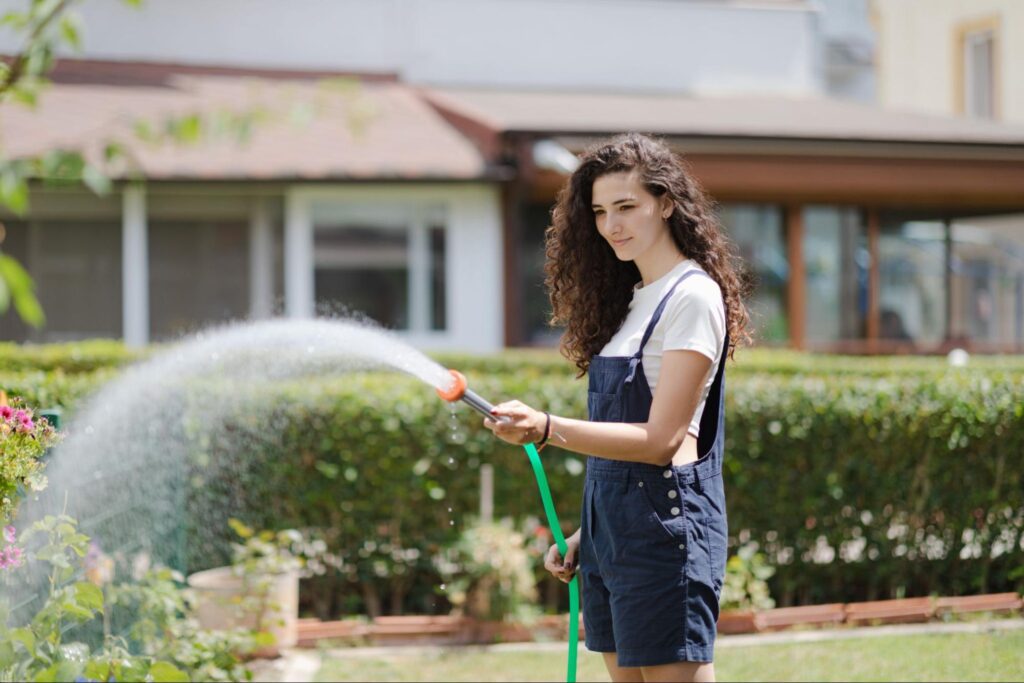
Atlanta’s climate requires precise watering, and Weed Pro will teach you how to effectively irrigate your landscape like a pro, avoiding water waste while managing your lawn’s health by providing it with exactly what it needs, when it needs it.
[Schedule your custom irrigation audit today!]
FAQ
How much water does a healthy lawn need weekly?
About 1–1.25 inches. Use a rain gauge or tuna cans to measure—and adjust by caller or weather alerts.
Are drip irrigation systems worth it for lawn areas?
Best for garden beds, not turf. Turf needs more even, broad coverage—sprinklers still win there.
Up Next: Keep Critters at Bay
Bugs in your salad? Fine. Bugs in your grass? Not so much. Next: “Keep Your Atlanta Lawn Looking Its Best: Expert Pest Prevention for a Thriving Yard.”

